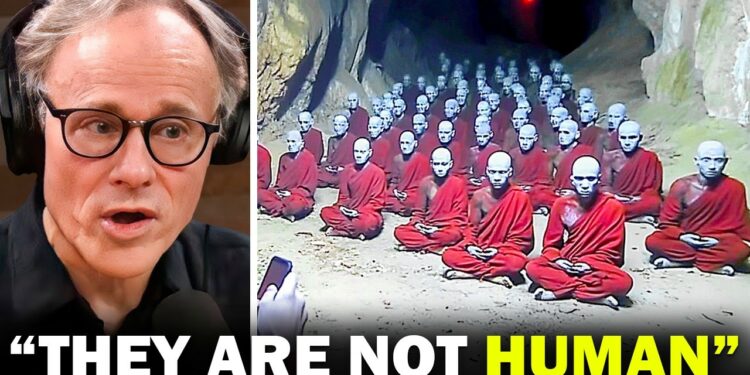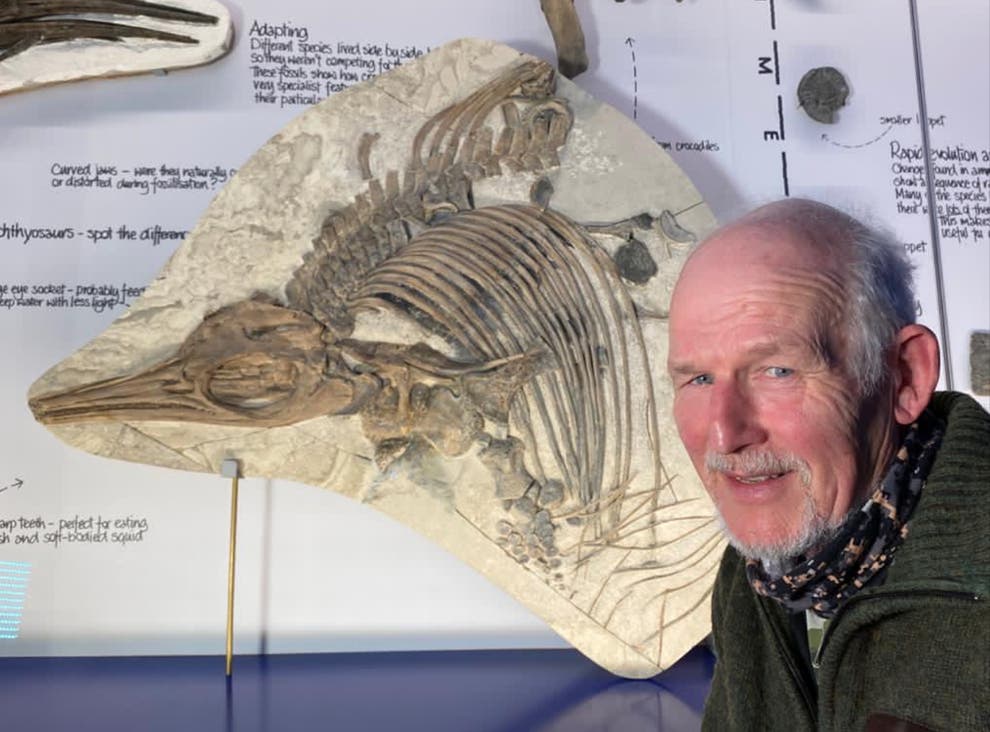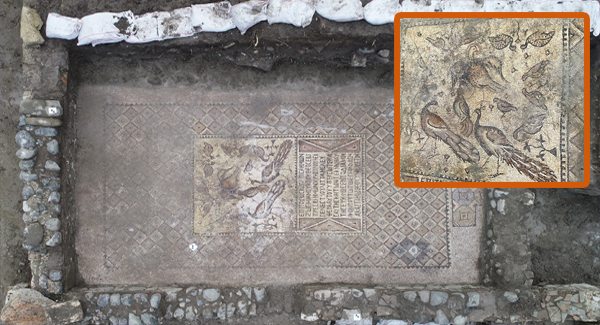Hidden within remote temples, dense jungles, and icy mountaintops are tales of monks who have defied science, unlocked ancient wisdom, and achieved feats that challenge our understanding of the human mind and body. Stories of self-mummification, reincarnation, superhuman abilities, and spiritual journeys raise questions about the secrets these monks protected and the truths lost to time.
The Mummy of Sangha Tenzin
One of the most intriguing Buddhist stories centers on Sangha Tenzin, a monk from Himachal Pradesh, India. His mummified remains were discovered in the Spiti Valley, high in the Himalayas, where harsh winters and high altitudes make survival difficult. Unlike the elaborately embalmed mummies of ancient Egypt, Sangha Tenzin’s body appears to have been preserved through self-mummification, a rare practice where the monk preserved his own body while alive, baffling scientists and observers. Local legends suggest he lived around 500 years ago, dedicating his life to deep meditation, extreme fasting, and rituals to preserve his body as death neared—an act of spiritual purity and mastery over physical sensations. The specific techniques he used are largely lost, leaving only oral stories and the astonishing sight of his mummy. The cold, dry climate of Spiti likely aided preservation by slowing bacterial growth. Discovered after earthquakes damaged his tomb, the monk was found seated in the lotus position, eyelids partly closed, as if in peaceful meditation. His skin, hair, and facial features remain remarkably intact. Scientific studies, including carbon dating, confirmed his age, while scans revealed his internal organs were replaced by herbal concoctions and dried tissues, a practice linked to rare Buddhist rituals in regions like Japan, though uncommon in India.
Tibetan Monks
In the Himalayan region, Tibetan monks follow a tradition marked by colorful prayer flags, spinning prayer wheels, and the Dalai Lama’s presence. Tibetan Buddhism, a blend of Indian Buddhism and Tibet’s ancient Bon religion, emphasizes compassion, meditation, and tantric rituals. These monks captivate global audiences with their spiritual depth and disciplined lives. A key aspect is their belief in reincarnation, where esteemed lamas consciously choose rebirth to guide followers. Spiritual committees search for reincarnated lamas using dreams, oracles, and subtle signs, as seen in the Dalai Lama, recognized as the Bodhisattva of Compassion. Tibetan monasteries are renowned for chants, ceremonies, and unique meditation practices like tummo, where monks generate inner heat through breath control and visualization, allowing them to endure freezing temperatures. Scientists have observed monks remaining warm in Himalayan caves, demonstrating how mental focus can produce physiological changes. Another iconic practice is creating sand mandalas—intricate designs made from colored sand, destroyed upon completion to symbolize impermanence. Despite Tibet’s isolation, Tibetan Buddhism has spread globally, especially after mid-20th-century political upheavals led exiled monks to establish communities worldwide, teaching compassion and meditation.
Mystic Monks of the Amazon
While monks are often associated with Asian temples or European monasteries, the Amazon rainforest hosts its own spiritual leaders, sometimes called shamans or curanderos. These figures guide ceremonies, heal with herbal remedies, and connect with the forest’s spiritual realms. Unlike cloistered monks, they live immersed in the rainforest, viewing it as a sacred site. Indigenous Amazonian communities rely on sustainable practices, including brewing ayahuasca, a potent concoction from the Banisteriopsis caapi vine and other plants. Shamans oversee all-night ceremonies where participants experience vivid visions, spiritual encounters, and emotional healing. Unlike formalized religions, these leaders learn from elders and the forest itself, treating trees, animals, and rivers as living teachers. Western researchers study ayahuasca’s biological properties, while others explore evidence of advanced horticulture and ancient city-like ruins preserved through oral traditions, revealing the Amazon’s complex cultural history.
Ancient High Priest Tomb in Egypt
Egypt’s pyramids and tombs continue to captivate, with new discoveries shedding light on its civilization. A 4,400-year-old tomb in Saqqara, an ancient necropolis near Cairo, belonged to a high-ranking priest from the Fifth Dynasty, around King Neferirkare Kakai’s reign. Untouched for millennia, it features vividly painted walls depicting daily life, religious rites, and the priest’s biography, offering a glimpse into the Old Kingdom. False doors carved into the rock allowed the deceased’s spirit to move between worlds, while statues in niches reflected the priest’s status. The tomb’s size, detail, and preservation are remarkable, with unexplored shafts hinting at more discoveries. Unlike monastic traditions, Egyptian priests integrated religion with governance, science, and architecture, advising pharaohs and managing astronomical and healing knowledge. This tomb reveals insights into Egypt’s societal and religious framework, highlighting its complex beliefs about life, death, and the afterlife.
Mahayana Monks
Mahayana Buddhism, prevalent in East Asia, emphasizes compassion and the bodhisattva vow, where monks delay personal nirvana to help all beings achieve liberation. Rooted in texts like the Lotus Sutra, Mahayana monks study sutras, recite mantras, and engage in community service. Daily life varies, with some monasteries focusing on chanting and meditation, while Zen-influenced ones prioritize long retreats. Monks teach children, support charities, and promote peace, their simple robes symbolizing humility. Mahayana temples host educational programs, attracting global visitors seeking mindfulness. Unlike ascetic-focused paths, Mahayana teaches that enlightenment is accessible to all, encouraging laypeople to cultivate compassion in daily life, raising global consciousness.
Zen Monks
Zen Buddhism, a Mahayana branch, emphasizes direct experience and mindfulness. Originating as Chan in China, it spread to Japan and beyond. Zen monks practice zazen (seated meditation) to observe thoughts without attachment, seeking satori (moments of clarity). They engage with koans, paradoxical riddles like “What is the sound of one hand clapping?” to transcend logical thinking. Monastery life balances meditation, work, and study, with tasks like cleaning approached mindfully. Silence fosters presence. Introduced to the West in the 20th century, Zen communities adapt to local contexts while emphasizing living fully in the moment, inspiring spiritual seekers worldwide.
The Meditating Monk in Mongolia
In Mongolia, a 200-year-old monk’s body was discovered in a meditative lotus position, stolen for the black market but recovered by authorities. Local Buddhist leaders suggested he might be in tukdam, a rare meditative state where decay is slowed through concentration. Though scientists attribute the body’s preservation to Mongolia’s dry, cold climate, the find challenges assumptions about human potential. The monk’s story highlights Buddhism’s historical role in Mongolia, suppressed in the 20th century but now reviving, with such discoveries seen as validation of spiritual mastery.
Monastic Life at Beomeosa Temple
Beomeosa Temple, on Geumjeongsan Mountain near Busan, South Korea, is a 1,300-year-old haven of Korean Buddhism. Monks begin their day at 3–4 a.m. with chanting, followed by meditation and vegetarian meals eaten mindfully. Tasks like gardening rotate, fostering responsibility, while education includes studying Buddhist texts. The temple hosts lay retreats, blending nature and tradition. Communal living in dormitories and shared spaces dissolves ego, teaching humility. In modern South Korea, Beomeosa offers a counterbalance to urban life, inviting visitors to slow down and embrace mindfulness.
Sadhus of Mount Kailash
Mount Kailash, a 21,000-foot sacred peak in Tibet, is revered by Hindus, Buddhists, Jains, and Bon followers. Never climbed, possibly out of reverence, it attracts pilgrims and sadhus—Hindu ascetics who renounce worldly life. Sadhus practice extreme prayer, fasting, and yogic techniques like tummo to endure sub-zero temperatures, meditating for days in isolation. Stories of sadhus surviving on minimal food or living in hidden caves fuel mystical tales. Modern hikers report unexplained phenomena, but scientific study is limited by the mountain’s sanctity.
The Forgotten Bhikshuni Monks
Bhikshuni, fully ordained female Buddhist monks, trace their origins to Mahaprajapati Gautami, the Buddha’s foster mother, who established the women’s monastic order. Despite early recognition, cultural biases halted bhikshuni ordination in some regions. Recent efforts in Thailand and Sri Lanka aim to revive the order, facing mixed reactions. Bhikshuni demonstrate resilience, serving as teachers and scholars, emphasizing compassion and equality. Their presence broadens Buddhist practice, highlighting inclusivity.
Shaolin Monks
Shaolin monks blend physical and spiritual training, rooted in Chan (Zen) Buddhism. Their day begins before sunrise with meditation, followed by kung fu drills to develop balance and power. Strength exercises include breaking bricks or enduring strikes, enabled by controlling qi (internal energy). Martial arts are a path to self-awareness, conquering internal and external conflicts. Despite historical challenges, Shaolin’s legacy endures, with monks teaching compassion and ethics alongside martial arts, inspiring global enthusiasts.
These monastic traditions reveal the depths of human potential, blending discipline, compassion, and resilience to uncover timeless truths.























